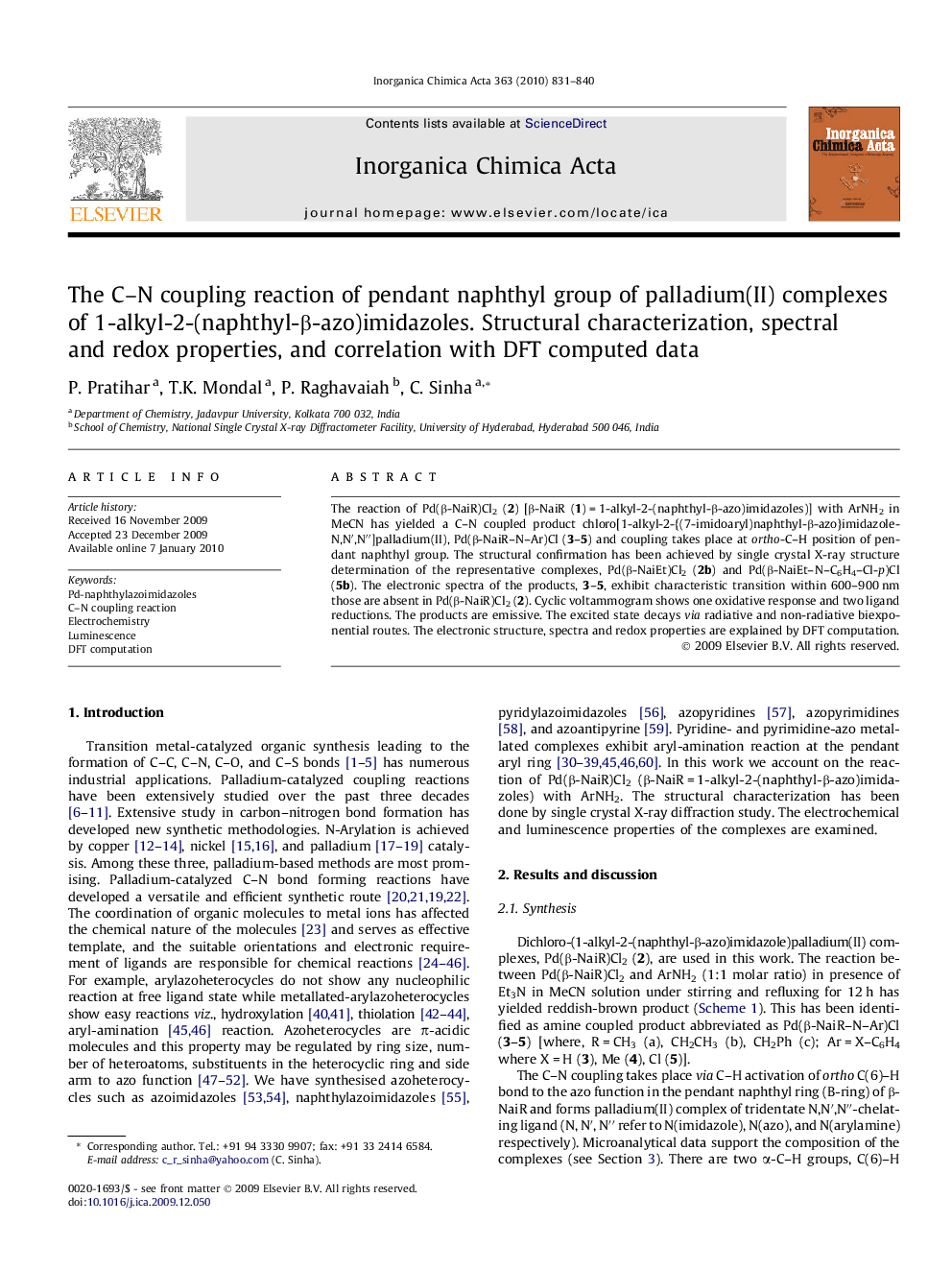| کد مقاله | کد نشریه | سال انتشار | مقاله انگلیسی | نسخه تمام متن |
|---|---|---|---|---|
| 1309298 | 975203 | 2010 | 10 صفحه PDF | دانلود رایگان |

The reaction of Pd(β-NaiR)Cl2 (2) [β-NaiR (1) = 1-alkyl-2-(naphthyl-β-azo)imidazoles] with ArNH2 in MeCN has yielded a C–N coupled product chloro[1-alkyl-2-{(7-imidoaryl)naphthyl-β-azo}imidazole-N,N′,N′′]palladium(II), Pd(β-NaiR–N–Ar)Cl (3–5) and coupling takes place at ortho-C–H position of pendant naphthyl group. The structural confirmation has been achieved by single crystal X-ray structure determination of the representative complexes, Pd(β-NaiEt)Cl2 (2b) and Pd(β-NaiEt–N–C6H4–Cl-p)Cl (5b). The electronic spectra of the products, 3–5, exhibit characteristic transition within 600–900 nm those are absent in Pd(β-NaiR)Cl2 (2). Cyclic voltammogram shows one oxidative response and two ligand reductions. The products are emissive. The excited state decays via radiative and non-radiative biexponential routes. The electronic structure, spectra and redox properties are explained by DFT computation.
The C–N coupling of naphthyl group in Pd(β-NaiR)Cl2 (β-NaiR = 1-alkyl-2-(naphthyl-β-azo)imidazole) is achieved with ArNH2 and has synthesized chloro[1-alkyl-2-{(7-imidoaryl)naphthyl-β-azo}imidazole-,N′,N′′]palladium(II). The coupled product shows longer wavelength transitions and electrochemical oxidation differing from precursor. Emission shows π–π* excitation process. The electronic configuration, spectra and redox properties are explained by DFT computation.Figure optionsDownload as PowerPoint slide
Journal: Inorganica Chimica Acta - Volume 363, Issue 5, 22 March 2010, Pages 831–840